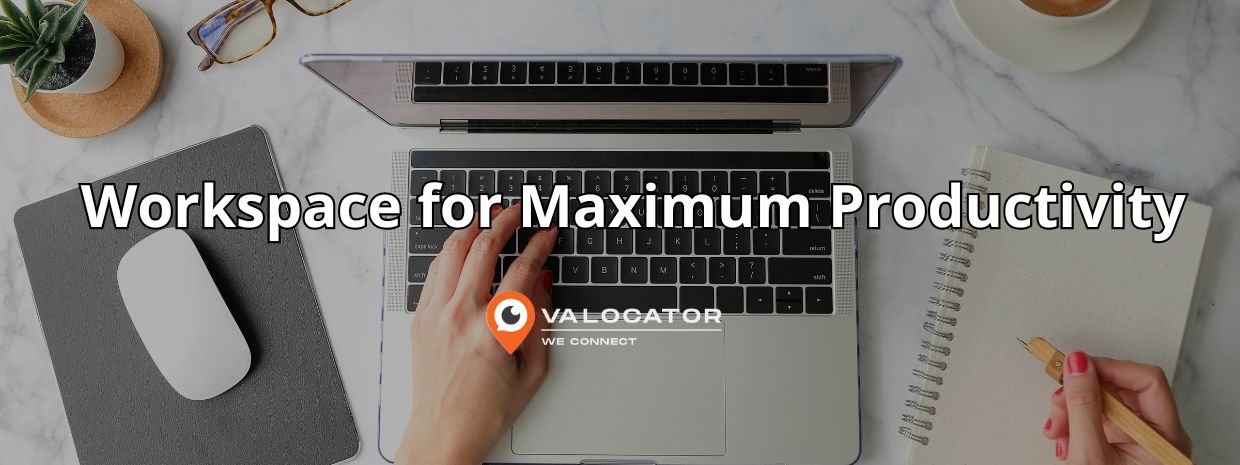How to Effectively Manage Your Workspace for Maximum Productivity

How to Effectively Manage Your Workspace for Maximum Productivity
Your workspace plays a crucial role in your productivity, focus, and overall well-being. Whether you’re working from home, in an office, or a combination of both, having a well-organized and thoughtfully designed workspace can make a significant difference in how you perform your daily tasks. Here’s how to manage your workspace effectively for maximum productivity.
1. Choose the Right Location
The first step in managing your workspace is selecting the right location. If you’re working from home, choose a space that minimizes distractions and promotes focus.
- Quiet and Private: Opt for a location away from high-traffic areas in your home. A spare room, a corner of your bedroom, or even a well-lit basement can be ideal.
- Natural Light: Try to choose a spot near a window where you can benefit from natural light. It can boost your mood and energy levels, making you more productive throughout the day.
2. Invest in Ergonomic Furniture
Comfort is key to maintaining productivity. Poor posture and discomfort can lead to fatigue, pain, and decreased efficiency. Investing in ergonomic furniture is crucial.
- Ergonomic Chair: Choose a chair that supports your back, promotes good posture, and is adjustable to fit your desk height. This will reduce the risk of back pain and other discomforts.
- Adjustable Desk: If possible, use a desk that can be adjusted for sitting or standing. Changing your position throughout the day can help prevent fatigue and keep you more engaged.
3. Declutter and Organize
A cluttered workspace can lead to a cluttered mind. Keeping your space tidy and organized will help you stay focused and efficient.
- Minimalism: Keep only the essentials on your desk. Limit items to those that you use daily, such as your computer, notepad, and a few pens.
- Storage Solutions: Use drawers, shelves, or storage boxes to keep paperwork and supplies organized. Label items so you can easily find what you need without searching through piles of clutter.
4. Personalize Your Space
While it’s important to keep your workspace organized, it’s also beneficial to personalize it. Adding a few personal touches can make your workspace more inviting and inspiring.
- Inspirational Decor: Hang up artwork, photos, or quotes that motivate you. A plant or two can also bring life to your workspace and improve air quality.
- Comfort Items: Add a cushion, a cozy blanket, or a scented candle to make your space more comfortable. Just be careful not to overdo it; too many personal items can become distracting.
5. Optimize Your Technology
Efficient use of technology is crucial for managing your workspace. Ensure that your tools and equipment are up-to-date and arranged in a way that supports your workflow.
- Cable Management: Use cable organizers to keep your cords tidy and out of the way. This not only improves the appearance of your workspace but also prevents accidents.
- Dual Monitors: If your work involves multitasking, consider using dual monitors. This setup can improve your efficiency by allowing you to view multiple documents or applications at once.
- Regular Maintenance: Keep your technology in top condition by regularly updating software, backing up files, and ensuring your devices are running smoothly.
6. Set Boundaries
Managing your workspace also means setting boundaries, especially if you work from home. Establishing clear work-life boundaries can help you stay productive during work hours and fully disconnect afterward.
- Dedicated Workspace: If possible, keep your work area separate from your living space. This helps you mentally switch into work mode when you’re at your desk and relax when you leave it.
- Work Hours: Stick to a regular work schedule and communicate it with those you live with. This ensures that you have uninterrupted time to focus on your tasks.
7. Regularly Review and Revise
Your workspace needs can change over time, so it’s important to regularly review and adjust your setup.
- Monthly Check-ins: At the end of each month, take a few minutes to assess what’s working and what’s not in your workspace. Make adjustments as needed to improve your comfort and efficiency.
- Decluttering Sessions: Regularly declutter your space to prevent the buildup of unnecessary items. This keeps your workspace organized and conducive to productivity.
